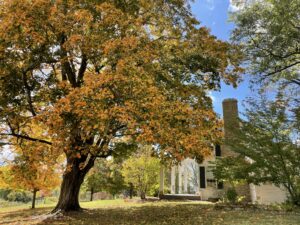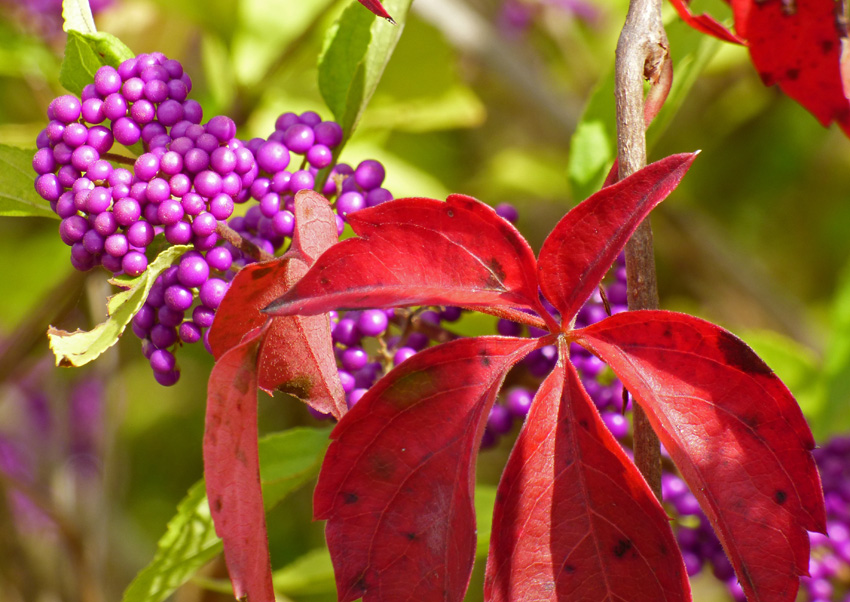
Over the millennia, plants have evolved many ingenious ways to spread their seeds. Some seeds are windblown, having feathery tendrils to catch the wind to far off places. Other plants grow seeds with sharp edges to catch on fur or your pants leg when you walk through them. 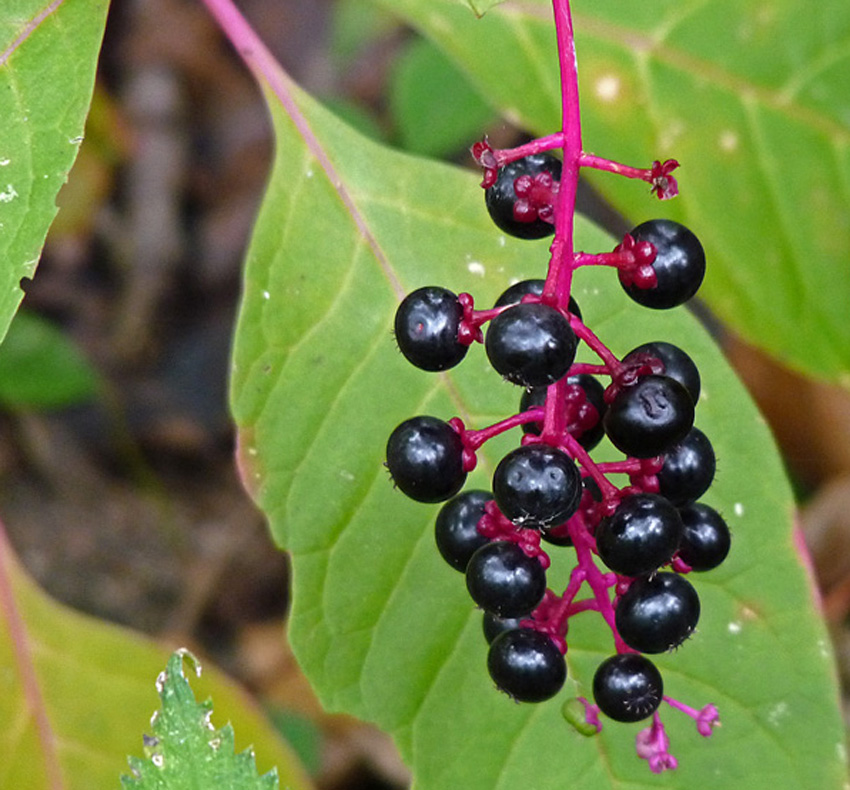
The plants that make berries are my favorites, since the berries are usually brightly colored. Sometimes people eat berries – such as blackberries and strawberries- but we don’t help those plants to spread their berries for reproduction. These dark purple Pokeweed berries are favorites with many birds. Just be sure you don’t park your car under a branch where those birds sit after eating poke berries! This plant will have ripe fruit and blossom on the same branch. Early pioneers used the juice of the purple berries for ink, which led to this plant being called Inkweed. Another name, Indian Greens, refers to the edibility of the young shoots and leafy tips. However, the berries, seeds, roots and mature stems and leaves are very poisonous, so leave these berries for the birds!
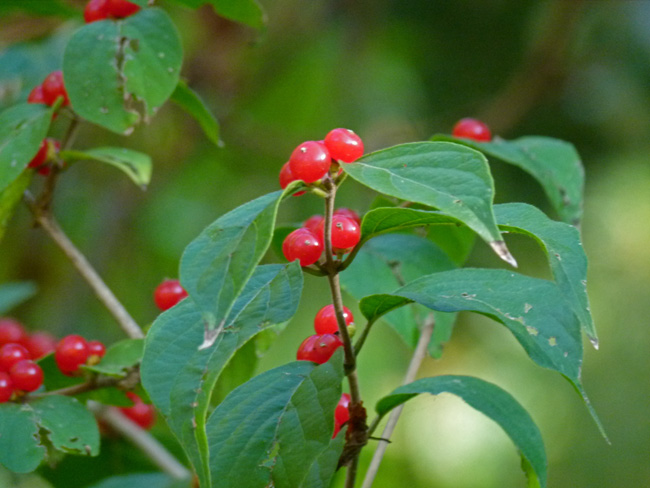
Japanese Honeysuckle vine and along with Bush Honeysuckle, are both widespread invasive plants. The white flower is very fragrant and the red berries are attractive to birds of many kinds. This Honeysuckle is a serious threat to native plants because it spread over and around native plants. Bush Honeysuckle releases a chemical into the ground which inhibits the growth of all other plants in that soil. However, since birds eat the red berries and spread them far and wide, it is very difficult to control this plant.
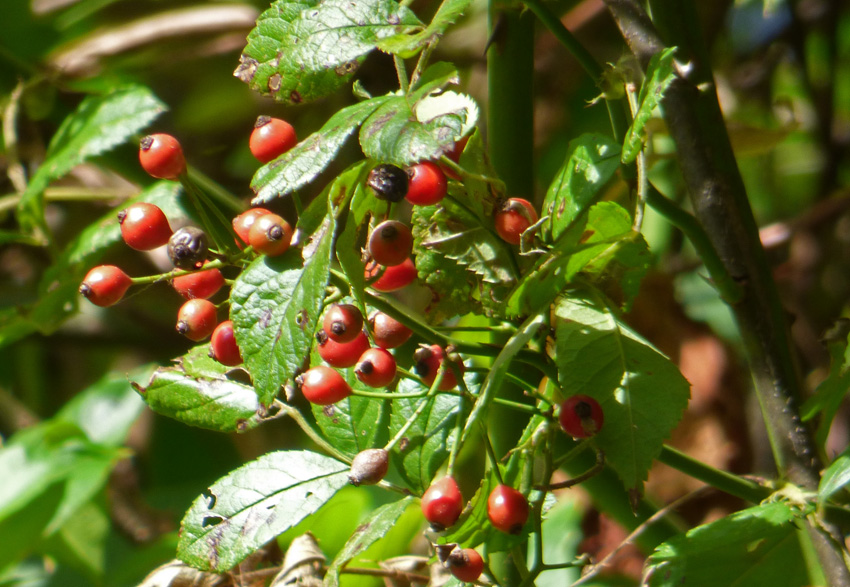
Another invasive with red berries is the Multiflora Rose. Rose hips are the round portion of the rose flower just below the petals. Rose hips contain the seeds of the rose plant. Dried rose hips and the seeds are used together to make medicine. Fresh rose hips contain a lot of vitamin C, so they share many uses with vitamin C including preventing and treating colds, flu, and vitamin C deficiencies. However, much of the vitamin C in rose hips is destroyed during drying and processing and also declines rapidly during storage.
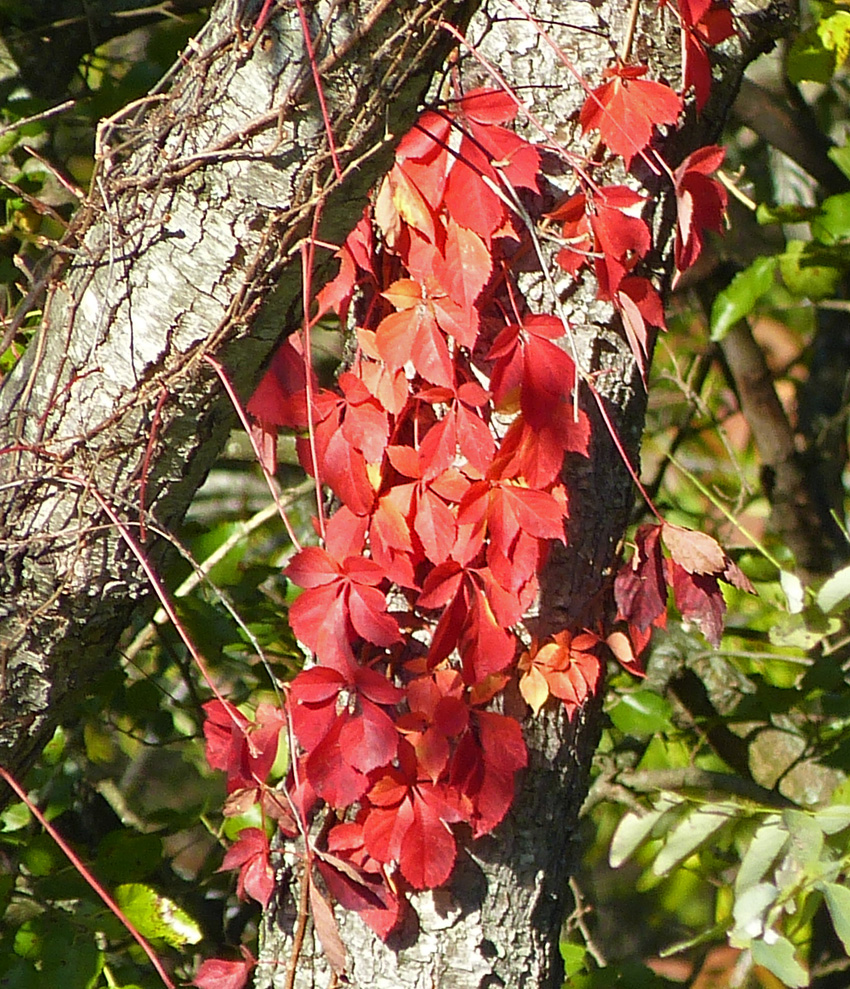
Virginia Creeper is a vine often confused with Poison Ivy. Creeper has 5 leaves, while Poison Ivy has only 3. Both turn bright scarlet in the fall, make a tree trunk look like it’s on fire in the bright sun. The small black berries of this plant are eaten by many animals, especially birds, including: Eastern Bluebird, Northern Cardinal, chickadees, woodpeckers, and Turkey. Other animals, such as mice, skunks, chipmunks, squirrels, and deer eat them too. White-tailed Deer also munch on the leaves and stems but Virginia Creeper berries are poisonous to humans.
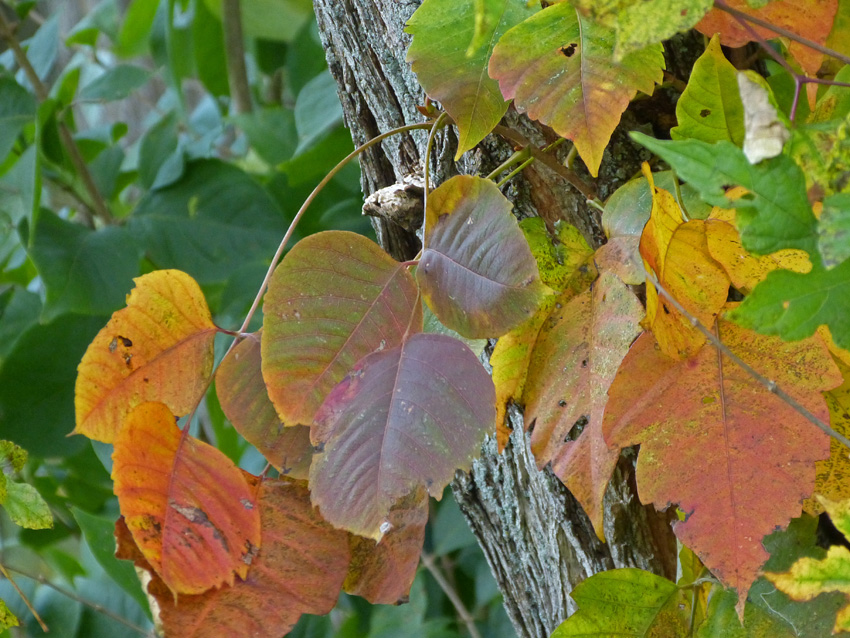
Poison Ivy berries are small and white. The berries are edible, but only if you’re a bird, the downy woodpecker eats the berries and spreads them through its droppings. Bluebirds eat insects all summer, but I’ve seen them chowing down on Poison Ivy berries in the winter when there aren’t many bugs. They also love Mistletoe berries.
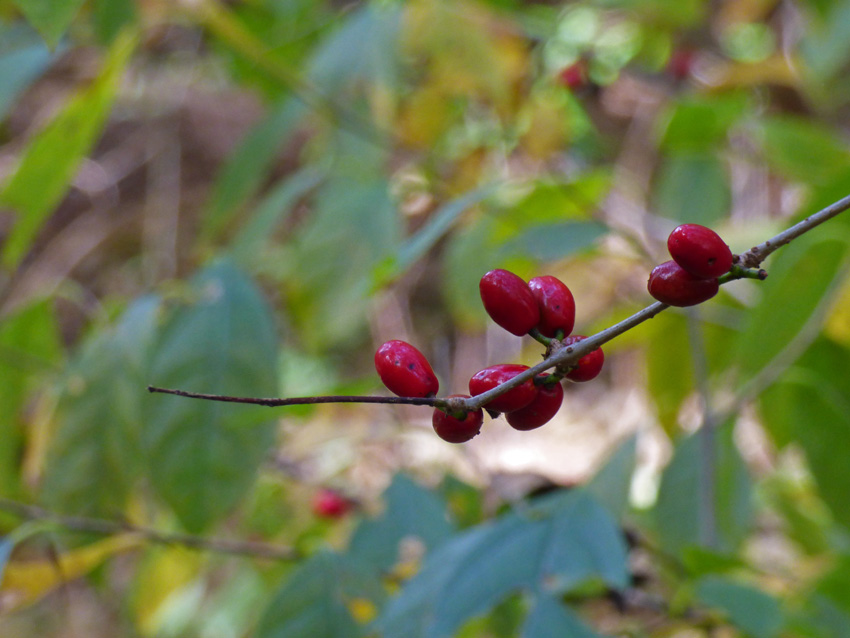
Spicebush is a small shrub that rarely grows over six feet tall. It is found in moist woods and marshes. Spicebush is one of the first shrubs to flower each Spring. The fruits of Spicebush are shiny red berries called drupes. Birds, including American Robin, Northern Bobwhite, Gray Catbird, Eastern Kingbird, and Great Crested Flycatcher, eat the drupes. Raccoons and Virginia Opossums eat them too. These dried berries were used as an allspice during the Civil War, packing a rich flavor and aroma. They’re picked red ripe from the understory of the forest before being carefully dried for later use. Simply grind the berries and add to desserts, rubs, coffee and more.
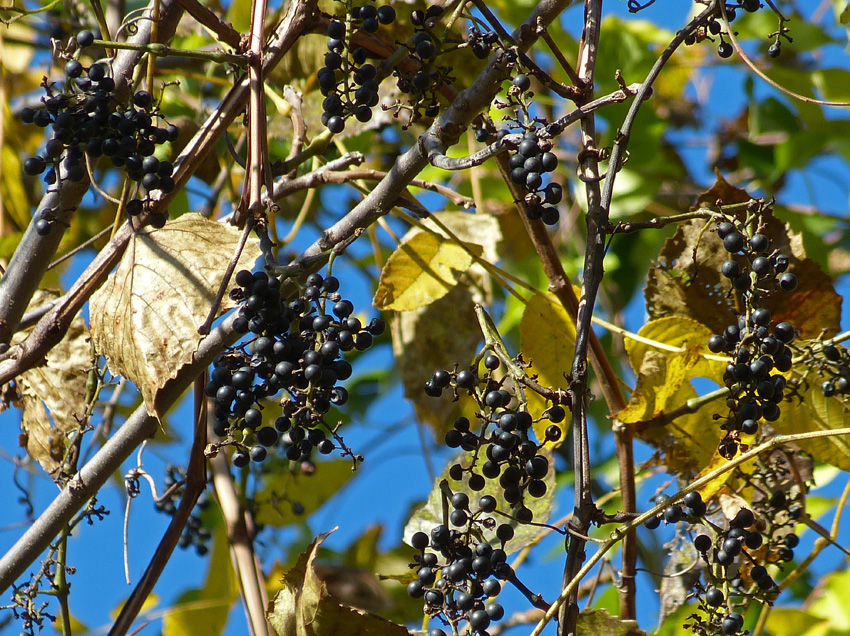
Wild Grape are woody vines which can climb over thirty feet tall. They have large, three-lobed leaves with teeth on the edges.Wild Grape flowers are green and small. They bloom from May to July. The fruit, of course, is what grapes are known for. Wild Grape grows large purplish-black berries in clusters of up to twenty. Fruits become ripe from August to October. Wild Grape fruit is very important for wildlife. Each berry contains two to six seeds. When animals eat the fruit, they help spread the vines by pooping out seeds in new places. Many birds nest in Wild Grape tangles, including Northern Cardinal, Brown Thrasher, Gray Catbird, and Northern Mockingbird.
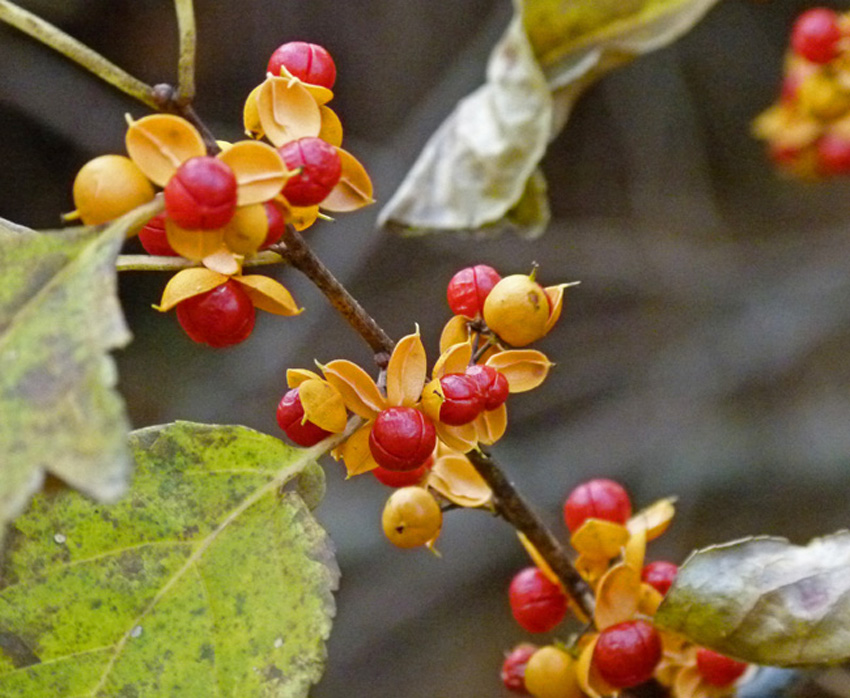
Fall berries help make this season so colorful, but please be careful. Just because birds eat them carefully does NOT mean the berries are safe for humans! If you are not an expert in edible plants, do not eat them!

